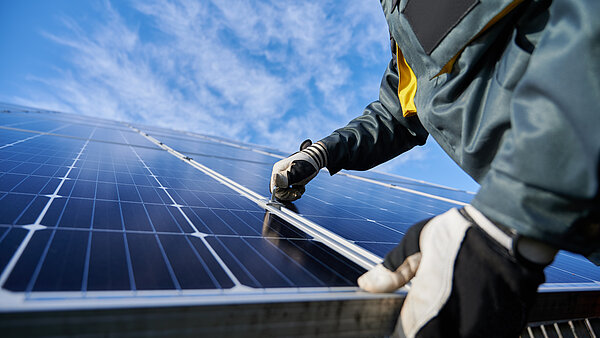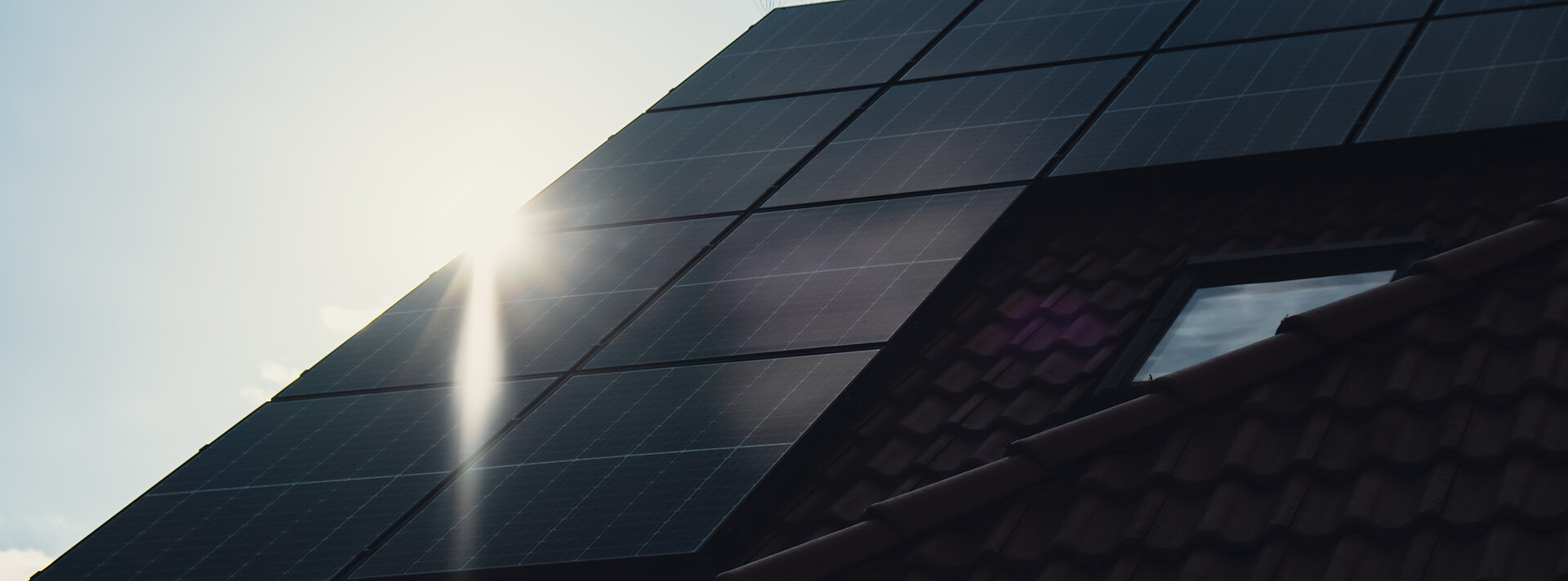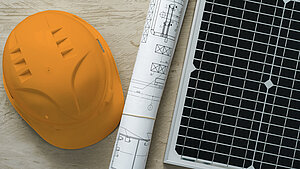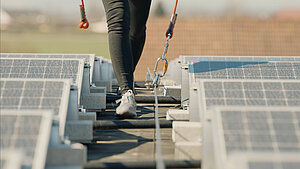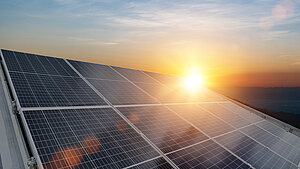But first of all, what matters most: Safety on rooftops always has top priority. And that is also prescribed legally through numerous regulations.
Increased turnover for responsible solar system installers
However, these very sensible safety requirements for PV systems on a roof also have a number of benefits for solar system installers. When they collaborate from the very start with a reliable partner for PV fall protection systems, and also pass on the importance of safety to all their customers, they can generate even more turnover in the short and long term. In addition, their customers always have a feeling of safety, and know that they are advised and supported professionally. This contributes directly to the positive image of the respective solar system or PV installer. Furthermore, the customer need not engage further trades or companies in order to obtain an integrated solution. The system operator thus saves himself a large amount of time and money – and that too soon gets around.
The major advantages of collaborating with INNOTECH, for you as a solar system installer:
- Finding the right solution for every safety problem on a roof, quickly and simply. And this starts as early as the installation of the PV system on the roof.
- Comprehensive support from INNOTECH and high-quality fall protection systems for PV installations on a roof.
- Absolute legal certainty.
- Increased turnover from long-term service and maintenance contracts with customers, as well as other additional business and referrals.
- Excellent image as a responsible solar system installer.
But your customers of course also benefit from this collaboration. Because they then have only one contact partner to deal with, i.e. the solar system installer, and they are also on the safe side legally, should something serious actually happen. And: A professional, certified fall protection system for the PV installation on a roof also ensures delivery of the best performance, and generation of the maximum solar power, because servicing and cleaning tasks can be performed safely at any time.
It is never too late to make the right decision ...
Many existing PV systems on the roof are insufficiently secured against falls. Solar system installers and system operators should therefore also retrospectively check the safety situation of the respective solar power plant, and make improvements where necessary. Because: It is never too late to do the right thing! If the PV system on a roof is protected only by an improvised solution then, according to AUVA (Austrian Workers' Compensation Board), DGUV (German Social Accident Insurance) and SUVA (Swiss National Accident Insurance Organization), there may already be a need to take action. The most important thing is that the fall protection system is optimised for the PV installation on the roof. This system can be individual protection (single anchor points, a lifeline system, or a rail system) or collective protection, such as a guardrail system. An overview of the most popular systems for retrofitting PV installations on a roof is available here.
Sales argument for fall protection
Solar system installers relieve their customers of a great deal of research and even hard work, if they are full service providers and offer not only the PV system itself, but also the appropriate professional, certified fall protection at the same time. This is because, by installing the PV system and its safety solution in a single step, they save the operators additional logistics and construction measures, which in turn means that the solar power plant can be commissioned more quickly. And, as a solar system installer, this allows you to increase the potential turnover significantly. You will find the 6 tips to help you increase turnover for your PV systems on a roof here.
The view of the bigger picture
Even just for legal reasons, as a full service provider of PV systems including professional, certified fall protection, you should always recognise all sources of danger on a roof and neutralise them accordingly. This includes not only roof edges, but also other trip hazards and obstructions, such as skylights and satellite dishes. The route up to the roof should also be made as safe as possible – and that even applies to the inspection of the property in the initial stages of the project. Particular danger areas on the route up to the roof are:
- The ascent – generally takes place via a window or a ladder
- The transition to the roof – one of the most dangerous moments whatsoever
For every project, all these danger sources and areas must be recognised and reported to the customer, so that he also obtains a feeling for the very important subject of safety. Solar system installers can also avail of this opportunity to build up long-term customer relations and to win follow-on orders.
Who bears the responsibility?
The roof is a dangerous workplace. For this reason, numerous regulations and standards exist worldwide for this area of activity. These are intended to significantly increase the safety of the employees who must work exposed in this way. In this blog post we are concentrating on Austria, Germany, and Switzerland. The question of responsibility too is legally governed. The operators of PV systems on a roof are liable for accidents which, resulting from defective or missing safety systems, often cause serious injuries or even result in death. In an extreme case, negligence may even be attributed – and this results in heavy penalties and possibly also consequences under civil law.
During the installation work, solar system installers are naturally responsible for the safety of their employees. In addition, solar system installers are obliged to inform their customers about potential safety precautions for the PV system on the roof. And also: AUVA, DGUV, and SUVA support companies in Austria, Germany, and Switzerland to eliminate all safety threats and injury risks on a roof. You will find further information about the legal regulations in Austria, Germany, and Switzerland here.
Only certified solutions are safe
A professional fall protection system for PV systems on a roof must satisfy a number of requirements before it is certified accordingly and can be categorised as safe. For this, the respective safety solution is thoroughly tested by the test laboratory of the Labour Inspectorate. In addition, the fall protection system must have operating and installation instructions which are comprehensive and understandable.
Collaboration with INNOTECH in practice
Every project has its own very specific challenges. But what happens when several projects have to be implemented at the same time? Is this even possible? An example from practice, at the Liechtensteinische Kraftwerke (LKW), who relied on collaboration with INNOTECH, provides a clear answer: Yes, it is possible.
Here is a brief report about this:
Martin Beck, who has led the Renewable Energy department in the Electrical Installation section at LKW for 15 years, has long recognised: “Renewable energy sources have been a long-term trend for some time”. However, the war in Ukraine caused the market for PV systems with battery storage to “explode almost overnight”. His established team was soon at full capacity. He was able to master this difficult period only by remaining calm, working consistently, and having support from the right partners. “For this, we are and were in permanent contact with the experts from INNOTECH, and we were and are supported very well. It is certainly also one of the keys to success that, thanks to INNOTECH, we are able to provide all-inclusive solutions”.
“INNOTECH has been our partner over many years, and they support us in the complex consultancy and implementation of fall arrest systems”, says Martin Beck, manager of the Renewable Energy department in the Electrical Installation section at LKW. The full interview can be read here.
Contact us immediately for further information. Our experts are happy to explain to you the numerous options for collaboration. Together we are even stronger.








![[Translate to Englisch:] [Translate to Englisch:]](https://www.innotech-safety.com/fileadmin/_processed_/1/a/csm_Mehrere_PV-Kunden_gleichzeitig_betreuen__kann_oft_zur_Riesenherausforderung_werden-header_c1a520d846.jpg)

















